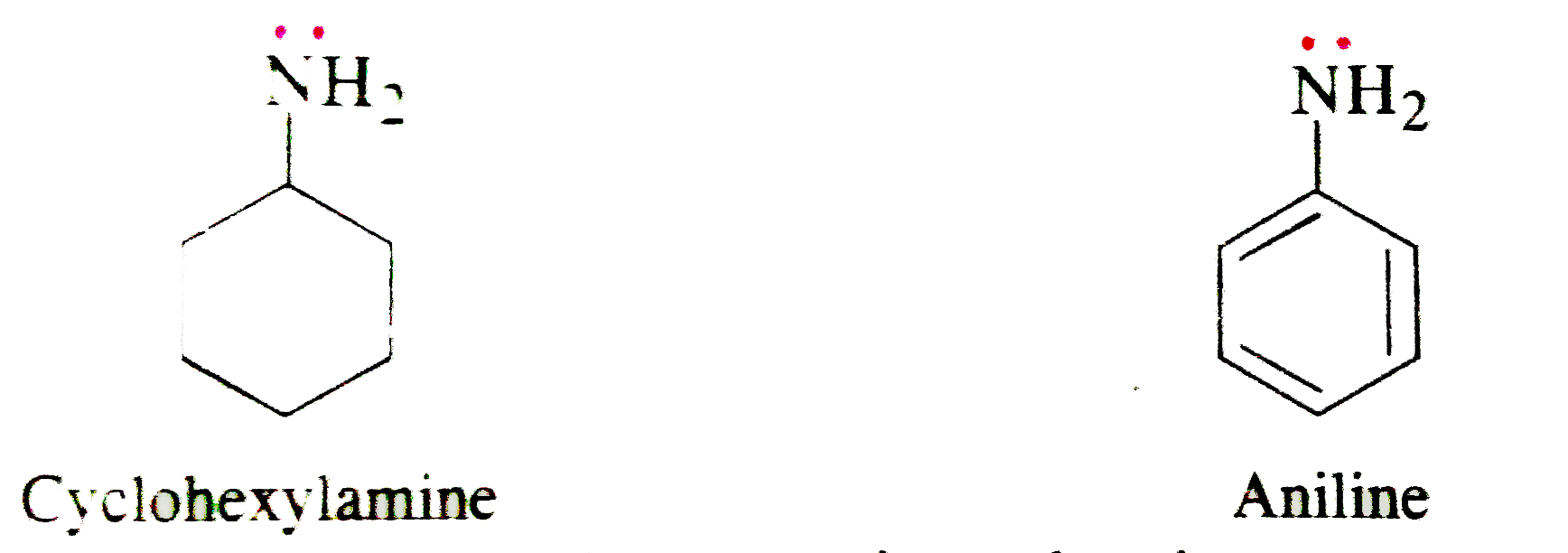p-methoxyaniline is a stronger base than aniline but p-nitroaniline is a weaker base than aniline. Explain.
To understand why p-methoxyaniline is a stronger base than aniline, while p-nitroaniline is a weaker base than aniline, we need to analyze the effects of the substituent groups on the aniline structure.
1. Identify the Structures:
- Aniline: The base structure is C6H5NH2.
- p-Methoxyaniline: The methoxy group (-OCH3) is attached to the para position of the aniline ring.
- p-Nitroaniline: The nitro group (-NO2) is attached to the para position of the aniline ring.
2. Understand Basicity:
- Basicity is determined by the ability of the nitrogen atom's lone pair to accept protons (H+). The more available the lone pair is, the stronger the base.
3. Effect of Substituents:
- p-Methoxy Group: The methoxy group is an electron-donating group due to the presence of a lone pair on the oxygen atom. This group increases the electron density on the aromatic ring and, consequently, on the nitrogen atom of the amine. The increased electron density on nitrogen enhances its ability to donate the lone pair to protons, making p-methoxyaniline a stronger base than aniline.
- p-Nitro Group: The nitro group is an electron-withdrawing group due to its strong electronegativity and resonance effects. It pulls electron density away from the aromatic ring and the nitrogen atom. This decrease in electron density on the nitrogen reduces its ability to donate the lone pair to protons, making p-nitroaniline a weaker base than aniline.
4. Comparison:
- In aniline, there are no substituents affecting the nitrogen's lone pair. Therefore, its basicity is moderate.
- In p-methoxyaniline, the electron-donating effect of the methoxy group increases the basicity.
- In p-nitroaniline, the electron-withdrawing effect of the nitro group decreases the basicity.
Conclusion:
- p-Methoxyaniline is a stronger base than aniline due to the electron-donating effect of the methoxy group, which increases the electron density on nitrogen.
- p-Nitroaniline is a weaker base than aniline because the electron-withdrawing nitro group decreases the electron density on nitrogen.
- Aniline: The base structure is C6H5NH2.
- p-Methoxyaniline: The methoxy group (-OCH3) is attached to the para position of the aniline ring.
- p-Nitroaniline: The nitro group (-NO2) is attached to the para position of the aniline ring.
- Basicity is determined by the ability of the nitrogen atom's lone pair to accept protons (H+). The more available the lone pair is, the stronger the base.
- p-Methoxy Group: The methoxy group is an electron-donating group due to the presence of a lone pair on the oxygen atom. This group increases the electron density on the aromatic ring and, consequently, on the nitrogen atom of the amine. The increased electron density on nitrogen enhances its ability to donate the lone pair to protons, making p-methoxyaniline a stronger base than aniline.
- p-Nitro Group: The nitro group is an electron-withdrawing group due to its strong electronegativity and resonance effects. It pulls electron density away from the aromatic ring and the nitrogen atom. This decrease in electron density on the nitrogen reduces its ability to donate the lone pair to protons, making p-nitroaniline a weaker base than aniline.
- In aniline, there are no substituents affecting the nitrogen's lone pair. Therefore, its basicity is moderate.
- In p-methoxyaniline, the electron-donating effect of the methoxy group increases the basicity.
- In p-nitroaniline, the electron-withdrawing effect of the nitro group decreases the basicity.
- p-Methoxyaniline is a stronger base than aniline due to the electron-donating effect of the methoxy group, which increases the electron density on nitrogen.
- p-Nitroaniline is a weaker base than aniline because the electron-withdrawing nitro group decreases the electron density on nitrogen.
Topper's Solved these Questions
- ORGANIC COMPOUNDS CONTAINING NITROGEN Book:MODERN PUBLICATIONChapter:ORGANIC COMPOUNDS CONTAINING NITROGEN Exercise:Competition File (OBJECTIVE TYPE QUESTIONS) (MULTIPLE CHOICE QUESTIONS (M.C.Q)) (A)
Explore 30 Videos
- ORGANIC COMPOUNDS CONTAINING NITROGEN Book:MODERN PUBLICATIONChapter:ORGANIC COMPOUNDS CONTAINING NITROGEN Exercise:Competition File (B) MULTIPLE CHOICE QUESTIONS
Explore 70 Videos
- ORGANIC COMPOUNDS CONTAINING NITROGEN Book:MODERN PUBLICATIONChapter:ORGANIC COMPOUNDS CONTAINING NITROGEN Exercise:REVISION EXERCISES LONG ANSWER QUESTIONS
Explore 5 Videos
- HALOALKANES AND HALOARENESBook:MODERN PUBLICATIONChapter:HALOALKANES AND HALOARENESExercise:UNIT PRACTICE TEST
Explore 11 Videos
- POLYMERSBook:MODERN PUBLICATIONChapter:POLYMERSExercise:Competition file (OBJECTIVE TYPE QUESTIONS) (C. MULTIPLE CHOICE QUESTIONS)(Integer Type Questions)
Explore 6 Videos
Similar Questions
Knowledge Check
Benzylamine is a stronger base than aniline because
Athe lone pair of electrons on the nitrogen atom in benzylamine is delocalisedBthe lone pair of electrons one the nitrogen atom in aniline is delocalised.Cis not involved in resonanceDbenzylamine has a higher molecular mass thanWhy o-derivative is weaker base than aniline?
AagtbgtcgtdBdgtcgtbgtaCcgtbgtagtdDagtcgtbgtdAniline is more basic than
ANH3BCH3NH2CN-Methyl anilineDP-nitroaniline
Acetanilide is less basic than aniline.
View SolutionCyclohexylamine is more basic than aniline. Explain

View SolutionGive reason: Aniline is a weaker base than cyclohexylamine.
View SolutionWhy is ethyl amine a stronger base than ammonia?
View SolutionEthylamine is a stronger base than acetamide. Assign reason.
View Solution